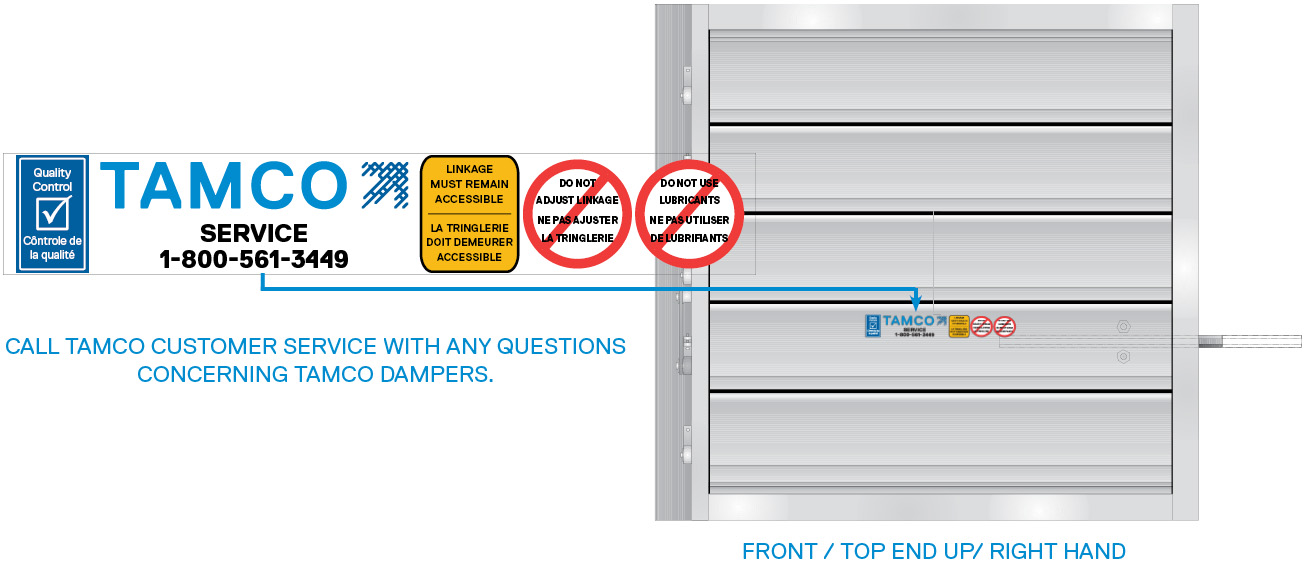- Instructions
- Documents
- Tamco label is always adhered to the damper’s drive blade, on the front (face) side of the damper.
- When labels on blades are viewed right side up, the damper orientation is Front/Top end up.
- When viewed as Front/Top end up, a right-hand (RH) damper has the drive rod as shown. Left-hand (LH) dampers have a drive rod on the left..
- The damper, as a complete unit, can be installed right side up, upside down, standing up, or lying flat.
- There is no specified air entry or air exhaust side for Series 1000, 1500, 9000, and 9000 BF dampers. This includes all applicable Options.
- The system must support the damper. The damper cannot support the system.
- Duct work construction and bracing must be sufficient to support the damper. Do not use the damper to square up duct work.
- Joiners and fasteners, provided by Tamco to interconnect damper sections, are for alignment purposes only and may not be considered as structural supports.
- Ensure that the damper is installed to permit future access to the side linkage, as well as any damper jumper brackets, or jackshafts, if so supplied.
- For vertical blade applications, refer to the supplemental instructions provided on the Vertical Blade Dampers page.
- A 12″ long, hexagonal steel drive rod is provided as standard. Dampers are shipped with their drive rod inserted in the drive blade. Drive rods may be extended up to 8″ beyond the outside edge of the frame by loosening the U-bolt, drawing out the rod to the desired length and then retightening the U-bolt.
- If required, 24″ and 36″ long zinc-plated, steel drive rods can be ordered.
Tamco’s all-aluminum dampers are constructed with maintenance-free bearing and linkage components.
Caution: Never use any lubricants, such as grease or silicone, on Tamco dampers.
In applications where the humidity level is unusually elevated, or where there are extremely high levels of dust and dirt particles, Tamco recommends that the damper linkage and bearing system should be cleaned once a year. This can be done by blowing away dust using compressed air. If needed, a domestic-strength steam cleaner can be used to loosen dirt, which can then be blown out with compressed air, along with any remaining water droplets.
Tamco Aluminum Control Damper Installation Guidelines
Download PDF Document
Download PDF Document (French)
Damper Jumper Installation Guidelines
Download PDF Document
Download PDF Document (French)
Horizontal Jackshaft Installation Guideline
Download PDF Document
Download PDF Document (French)

